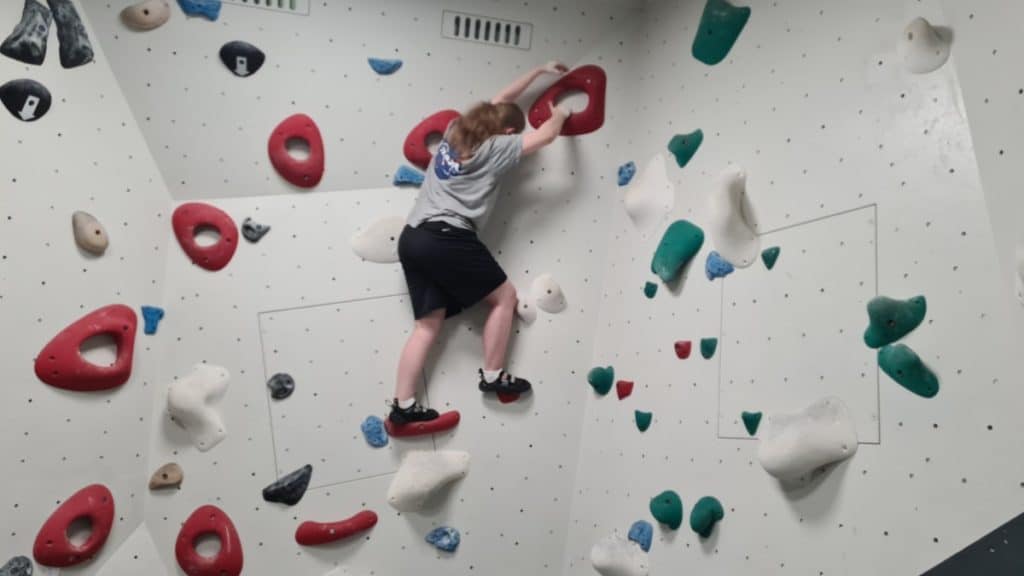
Climbing when you are short can be very frustrating, as you will need to try way harder on the same routes than other people that are taller. You will need more strength to climb and can’t reach many holds that are necessary to use for some routes.
However you can still become a pretty good climber even when you are a short person. My girlfriend is pretty short (5’3″/160cm) and the tips below helped her to improve her climbing by a lot, so you should definitely try them out aswell.
1. Be Aware That The Grades Might Not be Fitting For You
Most route setter make routes that are fitting for medium sized people. So the distances between hand and feet holds might be too wide for you, when you are a short person. Because of this you will need way more strength and a better technique to climb a route than somebody who is taller than the average person.
So for shorter people, especially when they are climbing harder routes, the grade isn’t appropriate for them. Because of this you shouldn’t focus too much on grades and don’t get demotivated when you see other people climbing a route you are not able to, altough you are the better climber.
Altough climbing is especially hard for short people, it is hard for everyone. It doesn’t matter how small or tall you are climbing is a very intense and exhausting sport. If you want to know why climbing feels so hard, you can find an article I wrote about that topic here.
2. Use The Inside Edge of Your Shoe
Try to avoid standing on your toe when you are struggeling to reach the next hold and stand on the inside edge of your shoe instead. Like this your shoe isn’t looking towards the wall (standing on toe), but it’s parallel to the wall (standing on inside edge).
Because your feet are now parallel to the wall you can push your hip way nearer to the wall than before and your body is straight, which extends the range where you can grab holds. When you are standing on your toes your hip is very far away from the wall and your body isn’t straight, which leads to a smaller range of your arms.
However, sometimes when you climb more difficult routes where the feet holds are very tiny you are forced to stand on them with your toes. In this case you can’t really use the inside edge of your shoe, but tip 10 might be helpful to you.
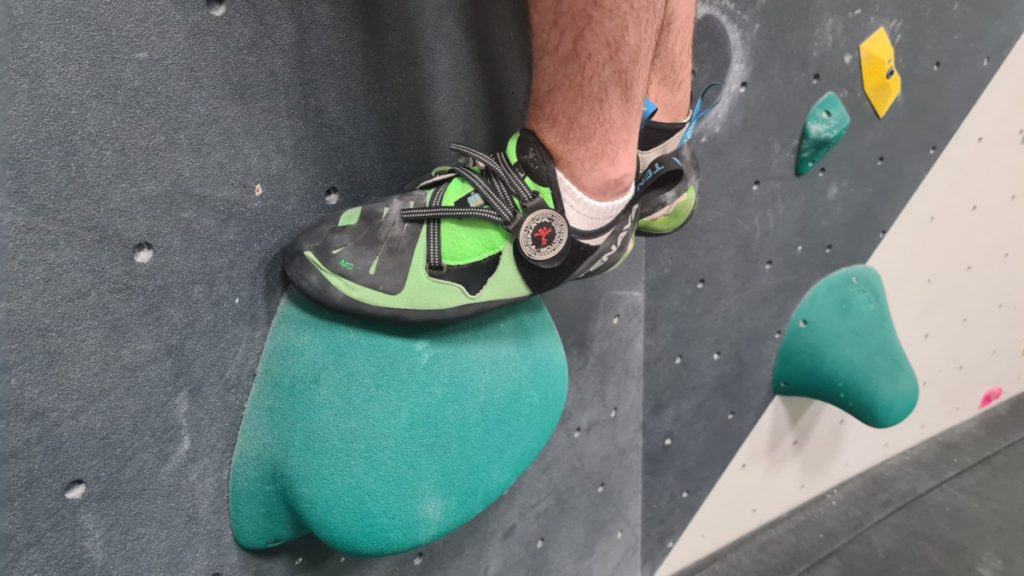
3. Use Your Feet Actively to Push Yourself up
When you are short using the feet holds actively is very important. Because you often cant reach hand holds, using the feet holds to push yourself up is often necessary. Try to not just stand on the holds with your feet, but instead use them to bring your body up.
When using the feet holds actively you often want to go on your toes to apply the most pressure onto them. If you are doing so it is imporant that your calves are flexed, so you are standing stable. Often this comes naturally when you try to use your feet actively.
Another benfit of using your feet and legs more is that you don’t solely rely on your arms and also train your entire body. Especially in technically focused routes using your feet actively is key to climbing it, so try to involve some of them in your training sessions, that you get used to it.
4. Use Smearing When You Can’t Reach a Foothold
Often you are alreay hanging on the holds with your hands, but can’t reach a foothold anymore when you are a short climber. This is when a technique called smearing comes into play. Smearing is pretty much just putting your foot against the wall, when there is no hold were you coud put it on.
Because of the sticky rubber of your climbing shoes, your foot stays on the wall. However you can’t really apply much pressure onto it, so you have to heavily rely on your arms and hands to hold your body weight on the wall.
Sometimes in harder routes there are some areas without any foot holds where smearing is the intended way to climb the route. For shorter people smearing can also be helpful to use in routes where it’s not intended, but the hold isn’t reachable.
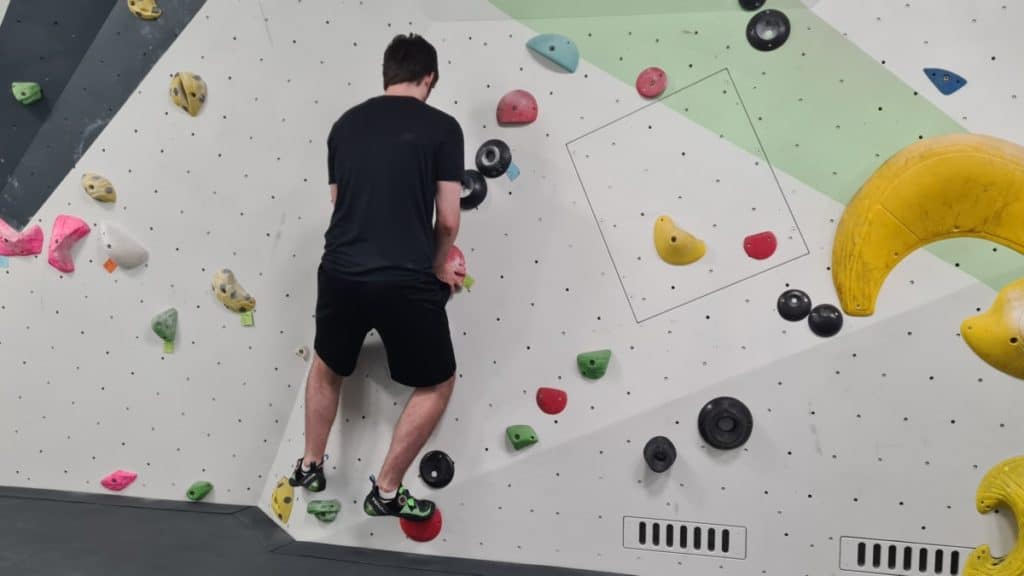
5. Train Lower Body Flexibility For More Range
Flexibility is a very helpful skill for short climbers, because often they reach very widely in order to grab holds. Especially the flexiblity in the lower body is helpful for climbing, as you can use your feet more when you are flexible in the legs.
Flexibility should be trained additionally to climbing and not in the climbing session itself. You can either warm up with streches before every training session or do yoga. Which ever way you choose to strech, try to do before you are actually climbing, so you can benfit from its effect.
When you climbed very hard and physically heavy routes try to avoid streching after the climbing session, because it can reduce muscle growth. To put it very simply when you are working out hard your muscle cells are pushed together and stretching pulls them apart, so your muscle cant regenrate optimaly when you strech directly after.
6. Use Dynamic Moves When Possible
Since a few years dynos are become more and more pooular in the modern climbing sport. Dynos are dynamic moves on the climbing wall that are not static and require momentum. Most of the times they are either jumps or swings to one or two hand holds, where you have to hold yourself.
Most of the times when a route has a dyno part, you can’t climb the route differently or cheat it and have to do the dyno part. However, for shorter climbers there are also sometimes parts they have to dyno that are not intended from the route setter.
When you can’t reach the next hold in a static way, you have to swing yourself up or jump to grab it. Important for doing dynos, is that you push yourself up with the legs and build momentum with that. Crouch down on the wall and than release the momentum with jumping up.
7. Don’t Copy The Beta of Other Climbers
In climbing the beta is the approach how you climb a route. It is pretty common that people see others climbing a route, where they were not able to figure out how climb it yet, and they just copy every movement. For shorter people however this isn’t going to work.
This is because shorter people often need a different, their own, approach of climbing a route as they often can’t reach holds the previous climber could reach. So unless you copy the beta of a route from a climber with similar size and skill you should figure it out yourself.
Trying to get the beta by yourself is also benefital, because your brain improves in problem solving and the next time your are climbing a route you are finding the beta faster and more intuitively. However it can take very long until you learn route reading. If you want to learn more about how long it takes to progress in climbing you can click here.
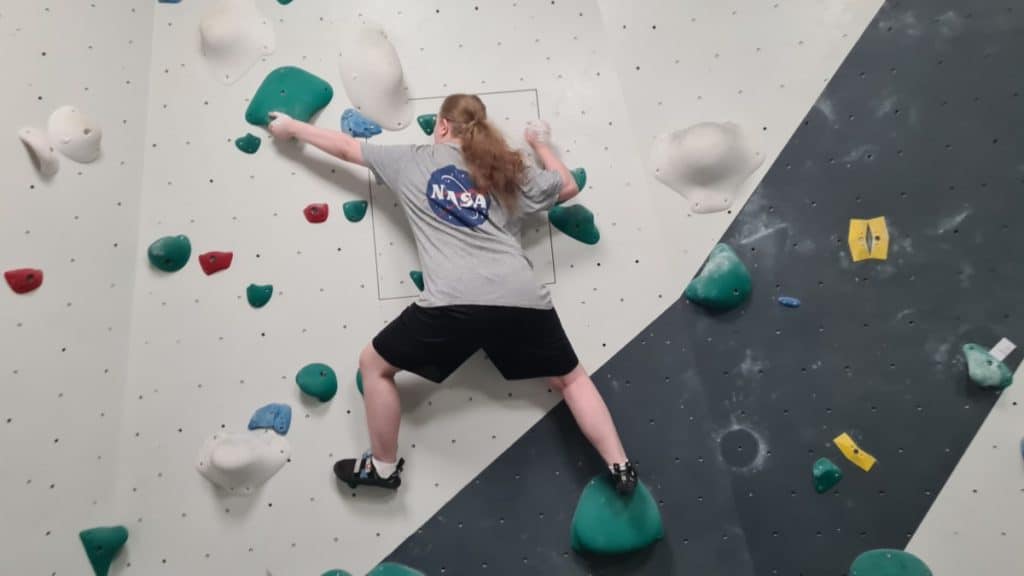
8. Use Hand-Foot Matching Whenever Useful
Hand-foot matching is a very useful technique especially for short people. It basically is just wait it says. You are putting your foot on the same hold your hand is and match it like that. To do that the hold has to be big enough, so your fingers and atleast your toes have enough space.
When you are matching your foot with your hand, the foot is very high, which gives shorter climbers an easy way to push theirselves up with that foot and reach hand holds that are pretty high and they couldn’t reach when the foot was a hold lower.
Hand-foot matching can’t be used everywhere, so only try to use it when it makes sense to you. Especilly when the wall is steeper it is very hard to match your foot with hand.
9. Use Your Size as an Advantage
Being a shorter climber doesn’t only have disadvantages, there are also some benfits you have compared to taller people in climbing. Theight routes, where the wall or volumes are in the way are perfect for you and very hard for people with above average height.
Another great example where your body height benefits you are all kinds of overhangs. In overhangs you have to put your core as near to the wall as possible and push against the holds with your legs. Because your body is shorter, it’s way easier for you to have your core near to the wall.
Another advantage you have as a short climber are routes with pocket holds or tiny crimps. You are often able to put one or two fingers more into these kind of holds than other people, which makes it way easier for you to hold and pull yourself up.
10. Wear Shoes That Are Stiff on The Toes
Wearing shoes that are stiff on the front can be benefitial for short climbers, as it allows them to stand on their toes and extend their range for a few centimeters. Sometimes this little distance makes the difference is already enough to reach the next hold.
Having a stiffer toe area is especially useful when you are climbing routes with a heigher difficulty, as the feet holds will get smaller and some of them are really tiny. Then all of your body weight is just on this little feet hold and being able to comfortably stand on your toes is the very benefitial.
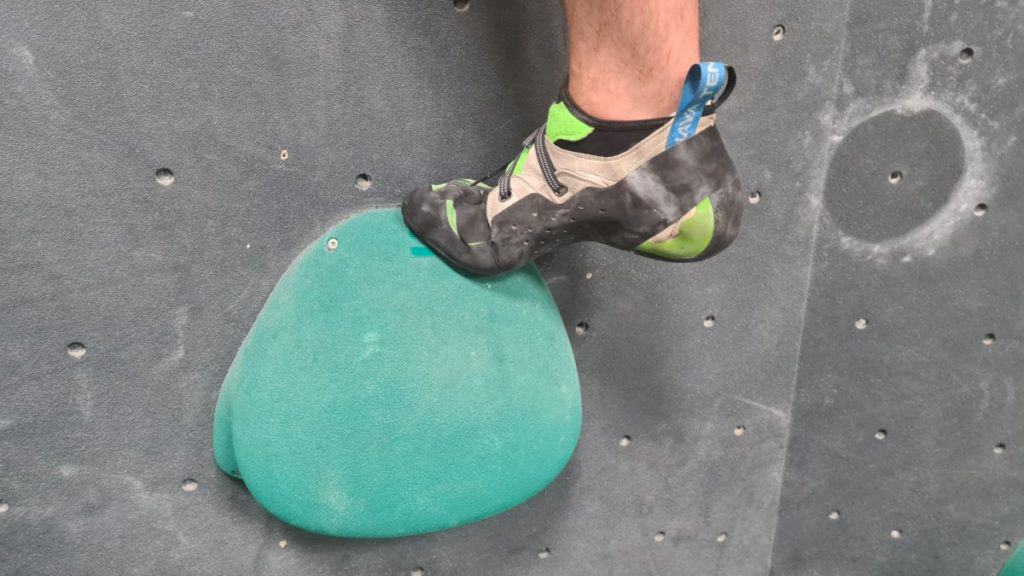
11. When Possible Use The Edge of The Holds
Often, when you are climbing easier routes, there are holds where you can almost put in your entire hand or all fingers. They are called jugs. If you have troubles with reaching the next hold as a short climber, try to not put your entire hand into the hold and just grab it as much as you have to.
Like this you will extend your range for a few centimeters, which are often the ones you need to grab a hold. It also trains your grip strength a lot more when your are climbing like this than it would when you grab the hold with your entire hand. So it’s a win win situation.
12. Train your Lock-Off Strength on Easy Routes
In climbing the lock-off strength means that you are strong enough to pull up and hold yourself with one hand, so the other hand is free. This skill is very useful for short climbers, because when they can hold themself with one hand they can use the full range the other hand t grab the next hold.
The lock-off strength can be trained on routes that are quite easy for you, where you hover over every hold for a few seconds (I recommended 5 seconds) before actually grabbing it. This simulates the holding with one arm, altough it’s obviously not as hard as it is to hold yourself on harder routes.
13. Study The Movement of Other Shorter Climbers
Looking at other people climb that have about the same body height as you can hep you to understand which problems they have in common with you and which are just problems for you. Sometimes you can learn creative solution from them for problem that apper very often for shorter climbers.
Studying professional climbers can also be benfitial, as you can see how they master some areas of routes with moves you are not able to do yet, but might be in the future. So you atleast already know they exist. A good example to watch for shorter people is Ramón Julián Puigblanqué, a spanish professional sport climber.
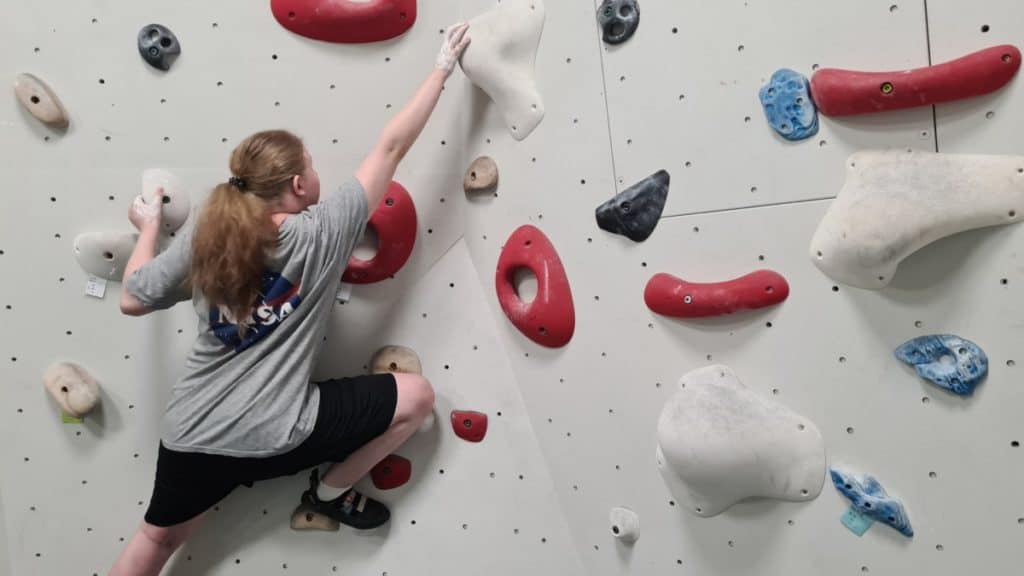
14. Put Up Your Feet First When You Can’t Reach a Hold
Altough you are often able to climb routes in many different ways there are always easier ones. For shorter people putting up the feet first and then grabbing the next hold makes thing often a lot easier, altough they would still be able to climb th route if they grabbed the hand hold first and then put up their feet.
Putting up your feet first just reduces that distance between your arms and legs, wich makes climbing way less exhausting. It also extends the range of your hands, so you can grab higher holds you couldn’t before, when your feet were on lower holds.
15. Don’t Use Your Height as an Excuse
It can be very easy to give up on a route after a couple of tries and blame it on your body height and that this route isn’t made for short people. However most of the times you are also able to climb the route, altough you are shorter than most people, if you just try a couple more times.
Don’t get demotivated because of that and keep trying. Also if you are not able to climb a route in the end, it still trains your climbing strength and makes you stronger. Most of the times you are able to climb the route in the next training session.
